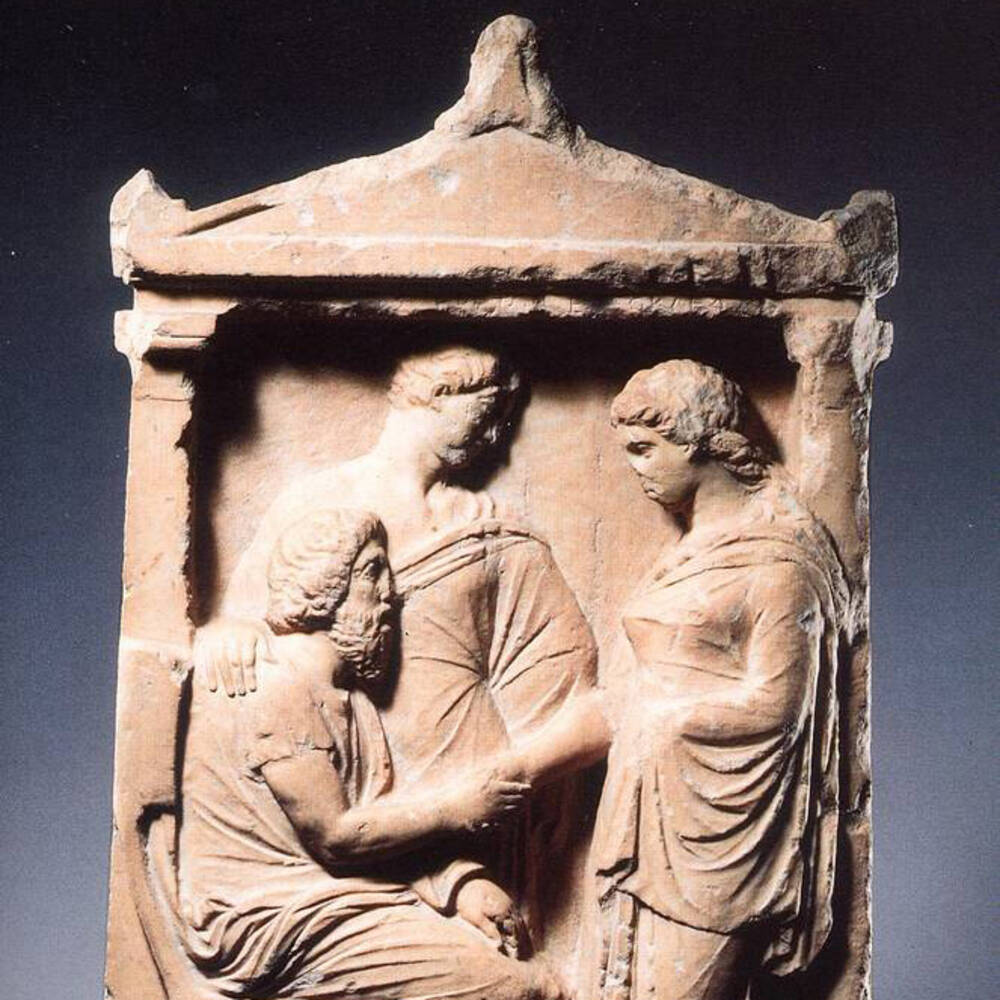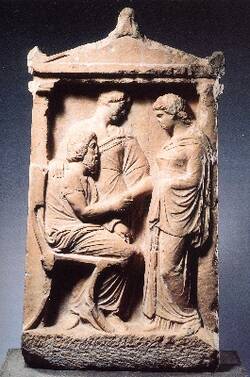The second largest of the four Attic gravestones depicts a seated man with a beard holding the hand of a standing woman, as well as a non-bearded man with his right hand laid on the shoulder of the seated figure. All three are identified by name on the architrave, yet it is unclear for whom the gravestone was actually erected: for the bearded man named Arkesilas, or rather for the standing woman, presumably his daughter?
Further Media
In contrast to modern gravestones, funerary stele in antiquity rarely mentioned the age of the deceased and the year of their death. In some cases, it is not even obvious who was buried there. We can deduce where and when this relief was made from its style and composition as well as from the marble itself, which came from a quarry near Athens. An antiques dealer sold this funerary stele to Dresden in 1912 – and perhaps he knew where it may once have stood. But if so, he took that knowledge with him to the grave.
Arkesilas may well have buried his daughter in the area known as Kerameikos on Athens’s main cemetery, since excavations there found many similar funerary reliefs. Some of the funerary stele were significantly larger, presumably commissioned by families with far more money than Arkesilas.
As was common in the classical world, the main cemetery in Athens was also set outside the city walls. Incidentally, if you think of ceramics when you hear the word Kerameikos, you’d be absolutely right. The area is named after the potters’ workshops once located in that district.
Kerameikos was crossed by two roads. One of them, known as the Sacred Way, led from the Sacred Gate to the shrines and temples at Eleusis. Many graves in particular were found along the Sacred Way. The second road led to the Academy, home of the school of philosophy founded by the Greek philosopher Plato.
- Location & Dating
- Attic, c. 360/50 BCE
- Material & Technique
- Pentelic marble
- Dimenions
- H: 88,5 cm, B: 48,5 cm, T: 13,5 cm
- Museum
- Skulpturensammlung
- Inventory number
- Hm 144

